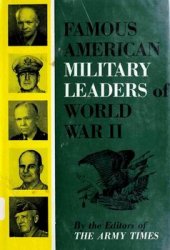Lambert of Lagny’s exact date of birth and death are not known. On the basis of indications found in some of the 15 manuscripts preserving his only known work - the Logica or Summa Lamberti-, one can locate his period of main activity around the middle of the thirteenth century. Lambert of Lagny was a scholar (clericus) in the Diocese of Meaux. Between c. 1250 and 1255, he was the preceptor of the young count Theobald V of Champagne (1238-1270, King of Navarre under the name of Theobald II the younger since 1253). Later on (1263-1265), Lambert became administrator of the Parisian possessions of the counts of Champagne. Lambert of Lagny is not identical with Lambert of Auxerre (Lambertus de Autissiodoro), the Dominican friar under whose name the Summa was transmitted. The confusion can be explained by the fact that the Summa played an important role as a logic textbook in the studia of the Domincan Order (de Libera 1982:229232, correcting the previous view held by Alessio 1971: XVI-XXXII as well as De Rijk 1969:160-162).
The Logica or Summa Lamberti (non-critical edition by Alessio 1971; edition of part VIII of the Summa, De appellatione, based on five manuscripts by de Libera 1982) is likely to have been written between 1253-1257 probably in Troyes, possibly in Pamplona (De Rijk 1969:161) or between 1250 and 1265 (de Libera 1990:214). The work seems to have been produced in several phases: a first redaction was completed in Navarre and the final edition, augmented by different treatises on the properties of terms, was made later on in France. This hypothesis, originally indicated by Alessio (1971:XLVI), was confirmed and specified by the study of the relation between section 3 of the last part of the Summa (De appellatione) and the Appellationes of the Parisian master Johannes Pagus. As de Libera (1982:233) has argued, Lambert must have known the Appellationes of Pagus before editing the final version of the Summa. Besides its utilization as logical textbook within the studia of the Dominican Order, the Summa might have exerted an influence on subsequent terminism (traces of Lambert’s logico-grammatical doctrine of determinatio as a means to solve paralogisms involving the fallacia compositionis et divisionis are present in tract VII of John Buridan’s Summulae - de Libera 1990:222).
The Logica or Summa Lamberti
The Summa is one of the four main textbooks of the so-called terminist logic of the thirteenth century. It is both posterior to and independent from Peter of Spain’s Tractatus, William of Sherwoods’ Introductiones in logicam, and Roger Bacon’s Summulae dialectices. The logical work of Lambert belongs to the Parisian tradition (as opposed to the Oxonian one). Two main characteristics of his semantics allow one to consider Lambert as a continental logician: his acceptation of natural supposition (suppositio naturalis) and, as a consequence, his conception of appellation (appellatio) as a restricted supposition. Accordingly, the main sources of Lambert’s
Henrik Lagerlund (ed.), Encyclopedia of Medieval Philosophy, DOI 10.1007/978-1-4020-9729-4, © Springer Science+Business Media B. V., 2011
Work are treatises pertaining to the Parisian tradition such as Johannes Pagus’ Appellationes, but also the Summe Metenses and the Syncategoremata of Nicolas of Paris.
The work is divided into eight parts. Alessio (1971) provides the following division:
1. De propositionibus
2. De predicabilibus
3. De predicamentis
4. De postpredicamentis
5. De sillogismo
6. De locis
7. De fallaciis
8. De suppositionibus et de significationibus
The tract De appellatione edited by A. de Libera in 1982 is the third section of part eight of the Summa, which is divided as follows:
8.0. Prologus
8.1. De significatione
8.2. De suppositionibus
8.3. De appellatione
8.4. De restrictionibus
8.5. De ampliationibus
8.6. De distributionibus
8.7. De relationibus
This structure shows that the tracts 1-7 reflect the content of the Aristotelian Organon, whereas tract 8 consists of the so-called parva logicalia or treatises on the properties of terms (the last section on relations is not devoted to the category of relation, but to relative pronouns).




 World History
World History









